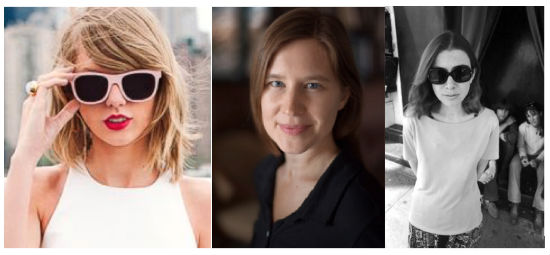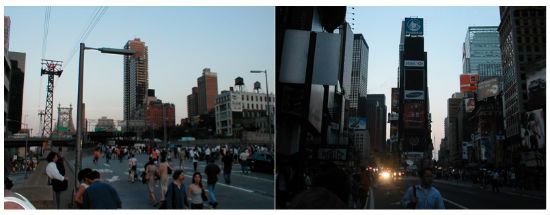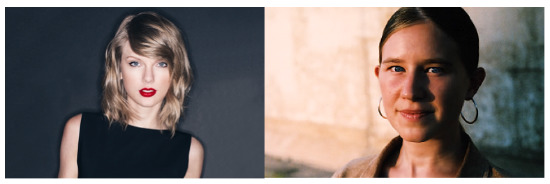
Welcome To All That
by Andrew Bomback
1.
When we first dropped our bags on apartment floors/Took our broken hearts, put them in a drawer/Everybody here was someone else before. – Taylor Swift
For me, New York ended as soon as it began. – Eula Biss
I was riding the 1 train the first time I heard Taylor Swift’s “Welcome to New York,” and I’m not entirely sure if I would have made the connection between the song and the Eula Biss essay, “Goodbye to All That,” if I had been anywhere else. When people ask me why I left New York, I usually answer the 1 train – not the train itself, but the elevator at the 168th Street station, which I took nearly every day for the five years that I lived in the city. I was in my twenties, studying medicine at Columbia, and there was a rumor that the elevators at the 168th Street station had the highest amount, per square inch, of Mycobacterium tuberculosis in the entire country. I held my breath in those elevators, as much to reduce the risk of acquiring TB as to see if I could simply accomplish the feat of not breathing for one minute. I was often doing stupid things like that back then, because I was young and I was a New Yorker and I feared that someday I wouldn’t be either of those things. Of course, saying that I left New York because of the elevators in a subway station is stupid, too, because I am now back in New York and back using those same elevators. I left New York all those years ago because I was essentially escaping a bunch of failures I associated with the city: a failure to find a career, a failure to find love, and a failure to be happy. And I returned only when I felt fairly confident that I had a career and a love and a chance to be happy about those things.
2.
It has been said that New York is a city for only the very rich and the very poor. Joan Didion suggested that it is a city for only the very young. In my worst moments, especially when standing on Madison Avenue, I have suspected that it is a city for only the very desperate or the very deluded. – Eula Biss
Welcome to New York/ It’s been waiting for you. – Taylor Swift
“Goodbye to All That” is a line-by-line, or at least a paragraph-by-paragraph, response to the famous essay by Joan Didion of the same name. Didion comes across as relatively unscarred in her farewell to the city. Her goodbye essay oscillates between affection and regret, but the reader never doubts that she enjoyed her time in New York, will someday return to New York, and will encourage other young people to try living in New York just as she did. The sadness of Didion’s essay, if there’s really anything sad to be found in her recollection, is that she’s no longer young and that it would no longer be considered an adventure for her to stay in an over-air-conditioned hotel room for three days, wrapped in blankets, trying to get over a cold. Biss, on the other hand, hits no nostalgic notes when she describes her own welcome to New York vigil: lying in bed in her new apartment, “staring at the ceiling, debilitated with dread,” overcome as much by the “animal-piss stink” of the room as by an “extreme aching sense of helplessness.” She couldn’t hear out of her right ear because it became clogged from crying.

Taylor Swift moved to New York in 2014, at the age of 25. She told Rolling Stone that she was initially intimidated by the city: “I thought I would never be able to make it here, because I wasn’t something enough – bold enough, brave enough to take on this huge city in all of its blaring honesty. And then at a certain point I just thought, ‘I’m ready.’” I’m not implying that Taylor Swift read either the Didion or Biss essays. For all I know, her primary reference for New York was the Jay-Z/Alicia Keys duet, “Empire State of Mind.” I am saying, though, that Taylor Swift’s “Welcome to New York” is far more Didion than Biss. In the song, she tries to cast herself into the company of young artists who’ve come to New York to achieve their dreams, but she was already a multi-platinum singer-songwriter when she arrived. The listener never doubts whether Taylor will survive in New York, just as the reader never truly sympathizes with Didion’s account of a relatively privileged New York lifestyle. All three women entered New York at about the same age, but only Biss’s account feels like an authentically young New Yorker experience.
3.
Like any great love, it keeps you guessing/Like any real love, it’s ever-changing/Like any true love, it drives you crazy/But you know you wouldn’t change anything, anything, anything. – Taylor Swift
I have to explain to you why I no longer live in New York, but first I have to explain to myself why I stayed so long. Because what I want to say about living there is that it is not, as the mythology goes, more real than anyplace else. In some ways, it is less. – Eula Biss
Taylor Swift sings of New York as her great and true love. She wouldn’t change a thing. Eula Biss eventually despised the “I♥NY” logo on bumper stickers and T-shirts.

I was sick the day I officially decided to leave New York. I was on my couch, asleep under my comforter and fighting off the flu, when a friend called me with news. She was getting married, she was pregnant, and she’d just sold her novel. “The trifecta,” I answered and then quickly got off the phone, because at the time I thought I was in love with her and thought I was a better writer than her, too. I knew it was time to leave because I couldn’t be happy for her and couldn’t imagine a scenario where I’d be able to accomplish my own version of the trifecta. Eula Biss talks about “the myth of New York” as a “glittering city of endless opportunity that oozes riches and delights for the young and talented,” people like Taylor Swift and that girl I both loved and envied. Lying under my comforter, I felt neither young nor talented. When someone starts using a phrase like “the myth of New York,” that person has already decided to leave New York.
4.
I was always lost in New York, even after I stopped walking east when I intended to walk west. There were just ways in which I fundamentally did not know where I was. – Eula Biss
The lights are so bright/But they never blind me. – Taylor Swift
Another friend, who left New York just a few years after I did, recently posted some old photos of New York City on his Tumblr. One was a picture taken inside a Gray’s Papaya. Another showed the Chelsea Hotel. Taxi cabs stopped at a traffic light. A man dressed up as the Statue of Liberty waiting for a bus. His caption for the pictures: “This is what I miss the most about living in New York. Since we moved to the ‘burbs, we rarely leave the house without a plan and a destination. But in New York, we would leave the apartment just to walk around and be out there.”

The Northeast Blackout of 2003 happened during my last year in New York, and it was one of my last purely happy times in the city. The subways and buses were down, and cabs were charging exorbitant fares. I walked over 100 blocks home from 168th Street to my apartment, passing through one neighborhood after another. The whole city seemed to be outside because there was no electricity inside. I felt part of one community, and then a few blocks later I felt part of another community, and then another and another. I finally reached my apartment, drank all the beer in my refrigerator so it wouldn’t skunk, and slept off my exhaustion. It was only after I’d left New York that I looked back on the blackout and wondered why I didn’t try to connect with any friends. I was already an ex-New Yorker when I started seeing wedding announcements in the Times of couples who’d met during the blackout. The couples in these announcements were always in their twenties, always smiling, and always New Yorkers. For them, New York was not “over-imagined,” to borrow Eula Biss’s adjective, but a real place with real people into which they’d successfully inserted themselves. I think it’s safe to say that if another blackout hits New York City, we can expect a song from Taylor Swift about how she fell in love that night.
5.
Everybody here wanted something more/Searching for a sound we hadn’t heard before. – Taylor Swift
I hardly even knew the story back then – I had only a vague sense that the heroine was young and that the moral had something to do with being in the right place at the right time. I was ready for anything. – Eula Biss
I came back to the city with a good job, a wife and a stepdaughter, and now I have another daughter and a son. If I have anything to complain about New York today, it’s that I can no longer experience it with fresh eyes and untainted ears and the expectations that I should be ready for “anything” to happen here. My New York story is over.

My three year old daughter initially sang Taylor Swift lyrics as a way to amuse her older sister and her cousins, but now I catch her singing the songs to herself when she’s alone. She can’t know what the lyrics mean (or so I hope) when she belts out, “Cause we’re young and we’re reckless/We’ll take this way too far.” Still, she sings with the same inflections and hits the same emotional notes as Taylor Swift does. Her cover version is much closer to the original than Eula Biss’s take on Joan Didion, and I think that’s because Biss became disillusioned with her hero (or, at least, her hero’s account of New York) by the time she wrote her own version of “Goodbye to All That.” My daughter, I’m sure, will eventually tire of Taylor Swift and move on to more serious endeavors. She’ll want “something more.” She’ll be “ready for anything.” She’ll figure out her own version of “the story.” For her sake, I just hope that she tries for a story that takes place in New York.
Andrew Bomback is a physician and writer in New York. His stories and essays have recently appeared in Human Parts, Hobart, Harlequin, Full Grown People, BULL, and Essay Daily.
Follow Vol. 1 Brooklyn on Twitter, Facebook, Google +, our Tumblr, and sign up for our mailing list.
